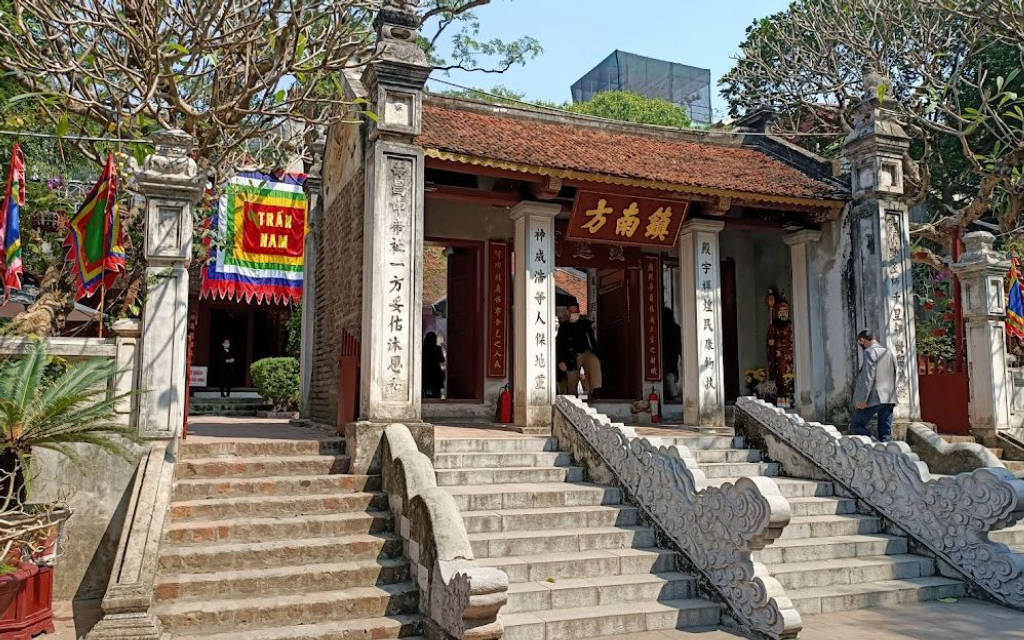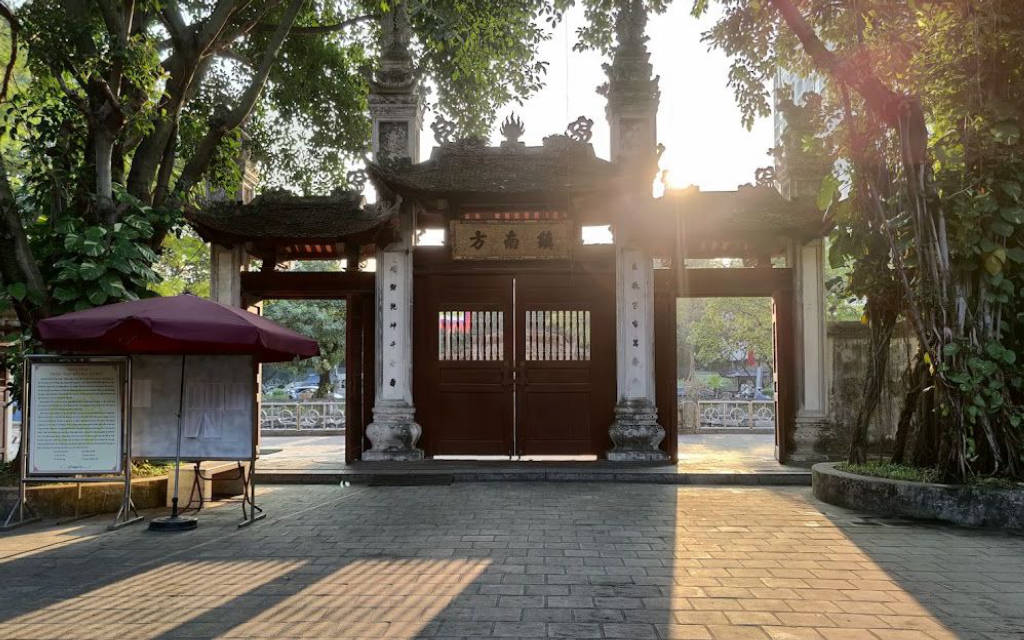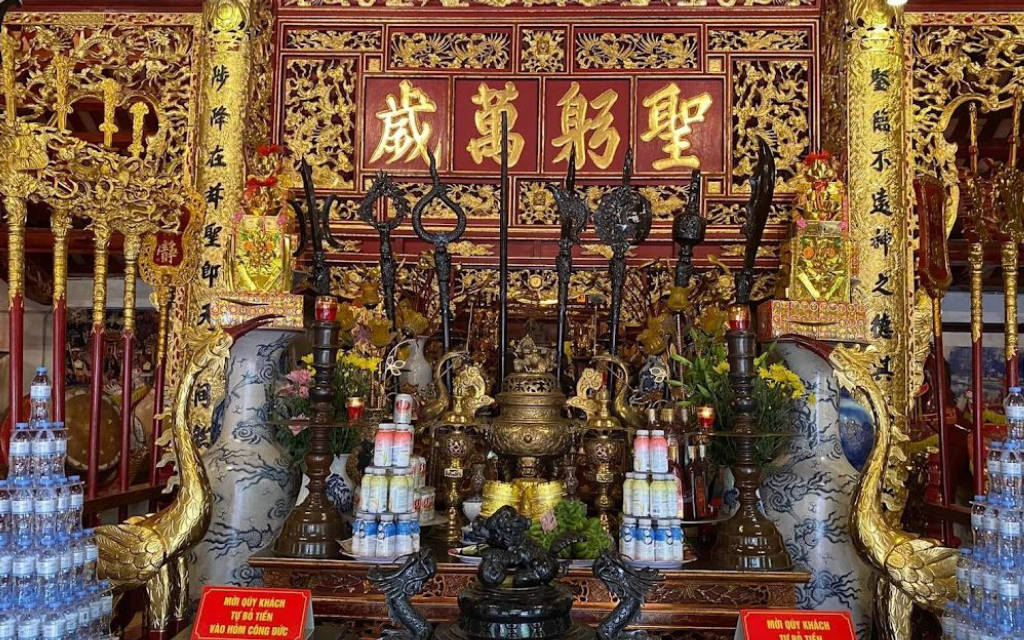Kim Lien Temple – One of Hanoi's Oldest Temples
Kim Lien Temple is one of Hanoi's oldest temples and part of the Four Sacred Temples that protected the ancient Thang Long Citadel. Today, let's explore the historical, cultural, and architectural values of this unique temple with Tatinta!
1. Location and Formation History
Kim Lien Temple is located at 148 Kim Hoa Street, Phuong Lien Ward, Dong Da District, by the banks of the To Lich River. From the center of Hanoi, it takes only about 15 minutes by car to get here. The temple was built during the Ly Dynasty with the mission of worshipping the god Cao Son Dai Vuong, who protected the southern part of the Thang Long Citadel. According to legend, Cao Son was one of the 50 sons of Lac Long Quan and Au Co. He was tasked with protecting the southern land, bringing favorable weather and peace to the people. Kim Lien Temple was built to honor his contributions and is a symbol of the connection between nature, spirituality, and Vietnamese life.
The most important relic at Kim Lien Temple is the stone stele "Cao Son Dai Vuong Than Tu Bi Minh" composed by historian Le Tung in 1510. The stele talks about Cao Son's contributions in helping King Le regain the throne and details 39 royal decrees for Cao Son Dai Vuong, including 26 from the Le Trung Hung period and 13 from the Nguyen Dynasty. The earliest decree dates back to the second year of Vinh To (1620).
2. Architecture of Kim Lien Temple
As you step into the temple's courtyard, you will feel the serene and ancient atmosphere. The temple embodies traditional Vietnamese architecture with soaring curved roofs adorned with intricate carvings.
Three-Entrance Gate: The entrance to the temple is a large three-entrance gate, solidly built with red-tiled roofs. The sides of the gate are inscribed with ancient couplets, showing respect and reverence for the deity.
Main Hall: This is where Cao Son Dai Vuong is worshipped, with a solemn altar and intricately crafted deity statues. The gilded wooden panels, couplets, and doors create a majestic and solemn appearance.
Temple Grounds: Outside the main hall, the temple grounds are covered with greenery and small lotus ponds, providing an airy and peaceful space. Especially during the lotus blooming season, the fragrance spreads everywhere, creating a rare sense of tranquility.
3. Festivals at Kim Lien Temple
Annually, Kim Lien Temple hosts many major festivals, attracting many locals and tourists. The main festival takes place on the 16th day of the third lunar month to commemorate Cao Son Dai Vuong's contributions.
Traditional Ceremonies:
These include processions, incense offerings, and ceremonial singing. All are performed in a solemn manner, rich in national identity.
Community Activities:
Alongside the ceremonies, the festival features many folk cultural activities such as dragon dancing, human chess, and traditional games. Participating in the festival at Kim Lien Temple not only helps you understand Vietnamese spiritual culture but also offers a chance to immerse yourself in the lively and joyful community atmosphere.
4. Historical and Cultural Values
Kim Lien Temple is not only a place of worship but also holds profound historical and cultural significance. Over hundreds of years, the temple has witnessed many ups and downs in Thang Long.
Historical Significance:
As one of the Four Sacred Temples of Thang Long, along with Bach Ma Temple (east), Voi Phuc Temple (west), and Quan Thanh Temple (north), Kim Lien Temple formed a spiritual defense system for the ancient citadel.
Cultural Value:
The temple is a testament to Vietnamese deity worship, expressing gratitude and respect for the heroes who protected the country. Additionally, Kim Lien Temple houses many valuable artifacts, from ancient wooden panels and couplets to old statues and worship items crafted from the past centuries.
5. Experiences When Visiting Kim Lien Temple
Visiting Kim Lien Temple, you can admire the unique architecture and peaceful space while experiencing many meaningful activities:
Incense Offering for Peace: This is an ideal place to pray for health, peace, and luck for yourself and your family.
Historical Exploration: With guided tours, you will gain a deeper understanding of the legend of Cao Son and the temple's role in Thang Long's history.
Relaxing in the Green Space: The temple grounds, with shaded trees and fragrant lotus ponds, are perfect for resting and enjoying the tranquility, away from the city's hustle and bustle.
6. Conclusion
Kim Lien Temple is not only a spiritual destination but also an indispensable part of Hanoi's historical and cultural landscape. If you want to delve deeper into ancient Thang Long, immerse yourself in a peaceful space, and feel the sacredness, Kim Lien Temple is the ideal place to stop.
Tips for Visiting Kim Lien Temple
- Ideal Time: Visit in the early morning or late afternoon to avoid the sun and enjoy the fresh air. The festival in the third lunar month is also when Kim Lien Temple is the most vibrant and colorful.
- Attire: When entering the temple, wear modest and respectful clothing to show reverence for the deity.
- Transportation: You can easily reach the temple by motorbike, car, or bus. A spacious parking lot is available near the temple gate.
- Opening Hours: All day
- Admission Fee: Free
 Register
RegisterSign in Travel Agent
Sign in Supplier
Sign in Affiliate
Sign in Guru







 148 Phố Kim Hoa, phường Phương Liên, quận Đống Đa, Tp. Hà Nội, Việt Nam
148 Phố Kim Hoa, phường Phương Liên, quận Đống Đa, Tp. Hà Nội, Việt Nam